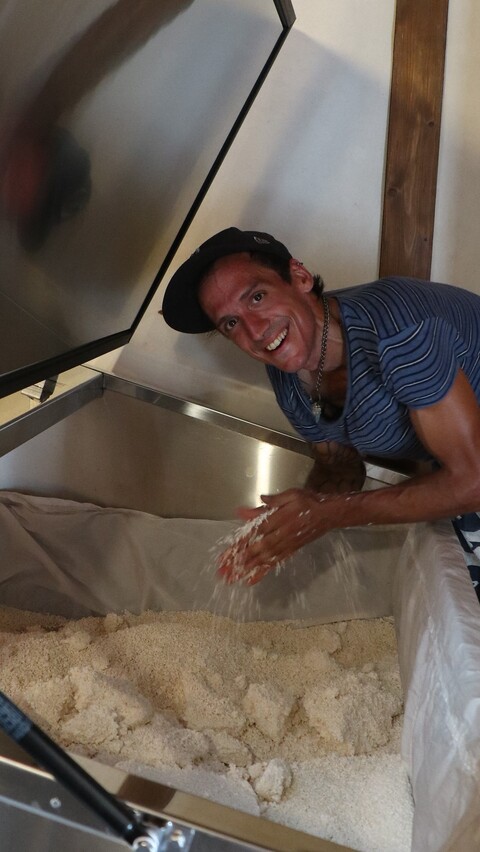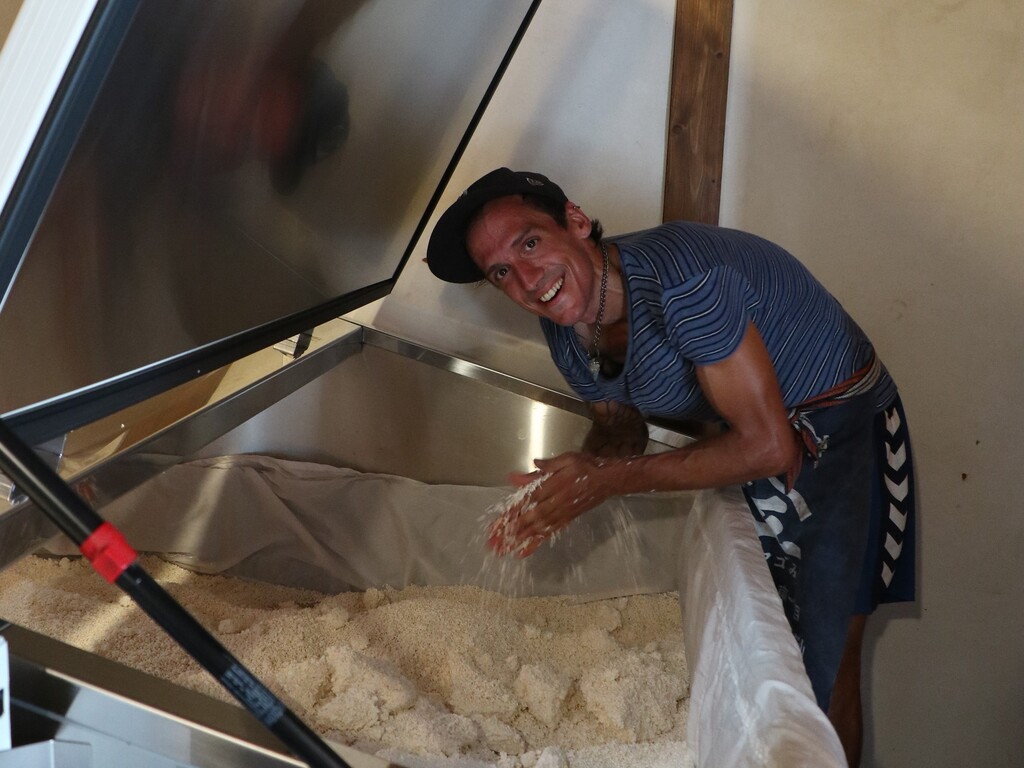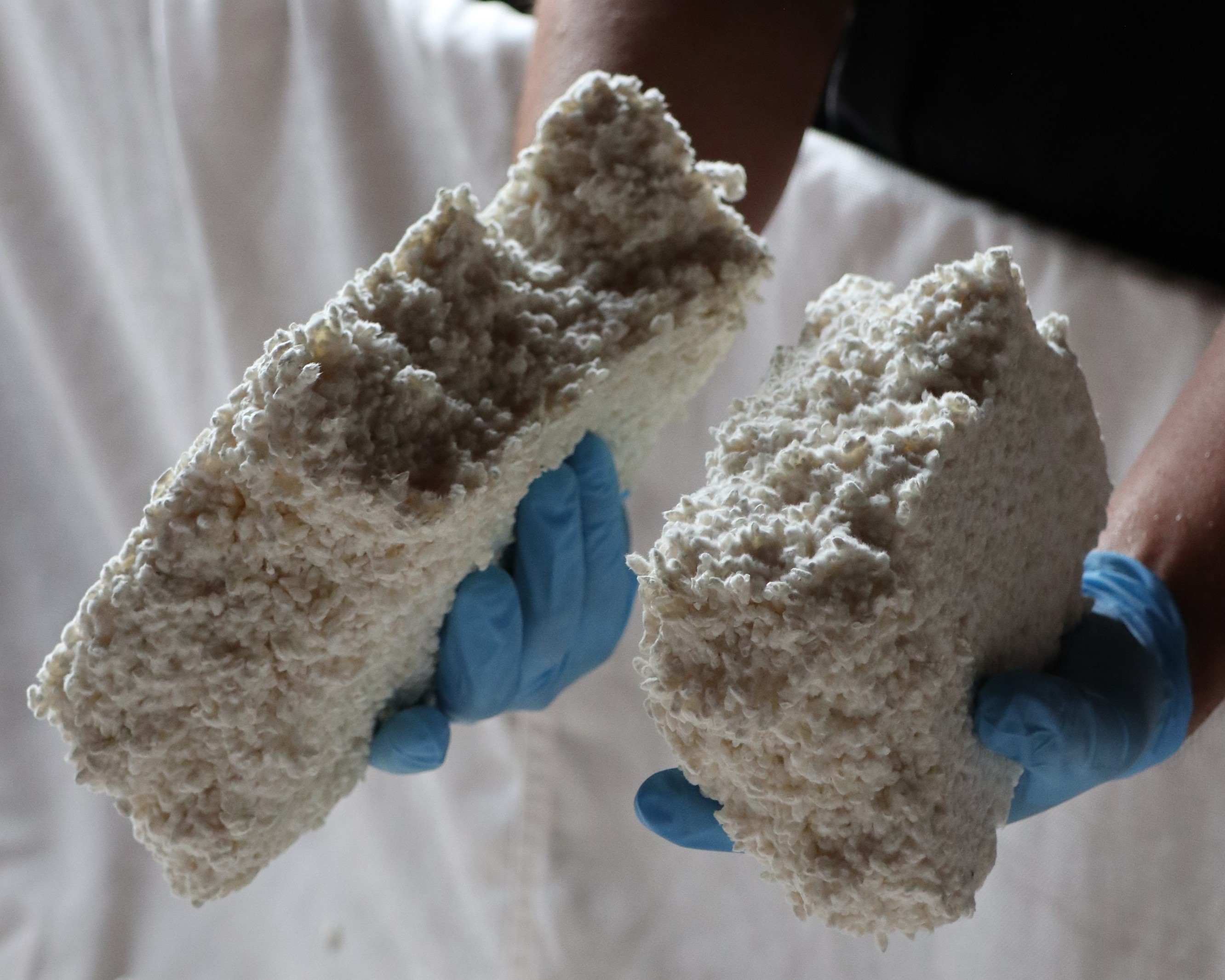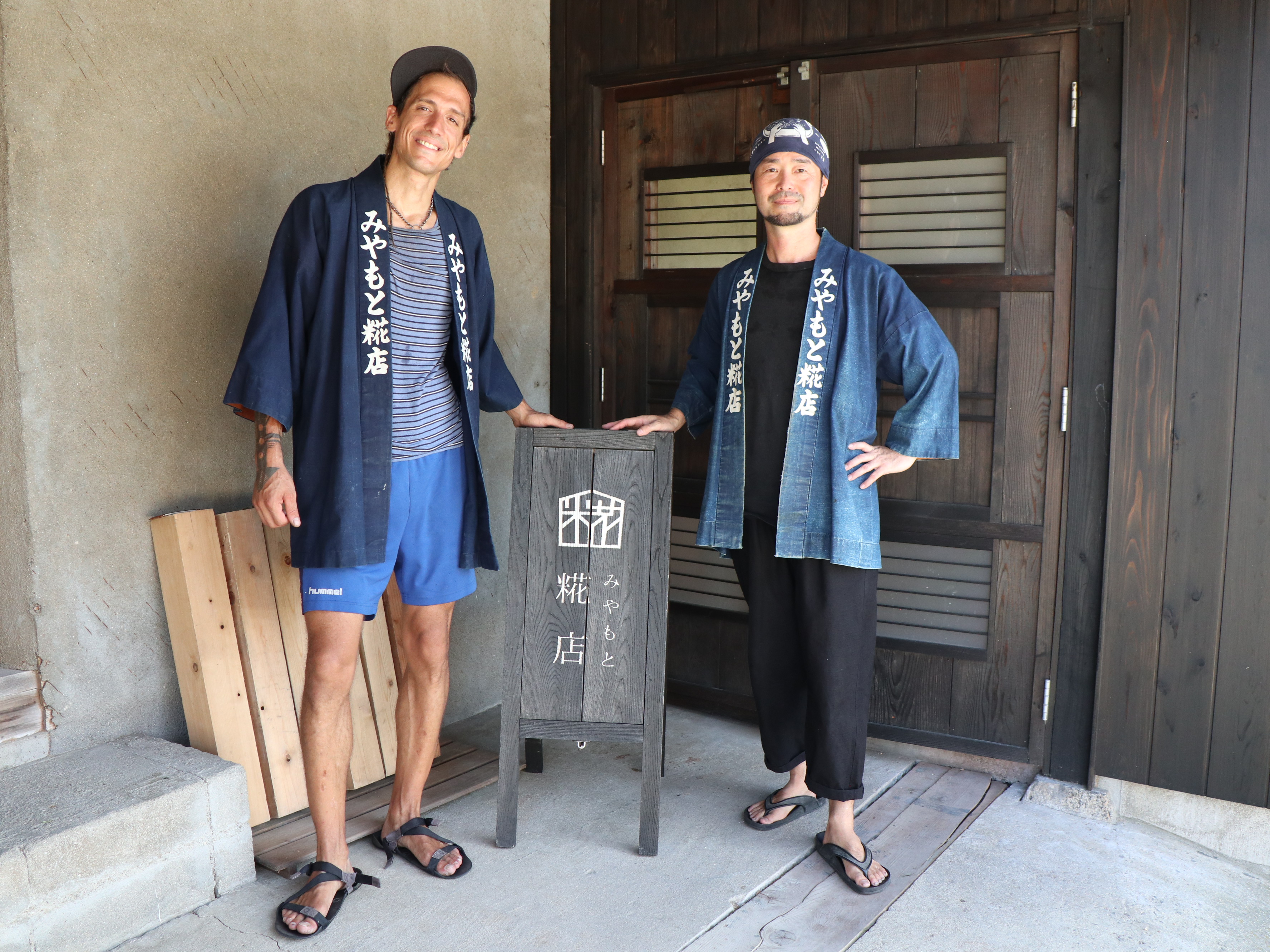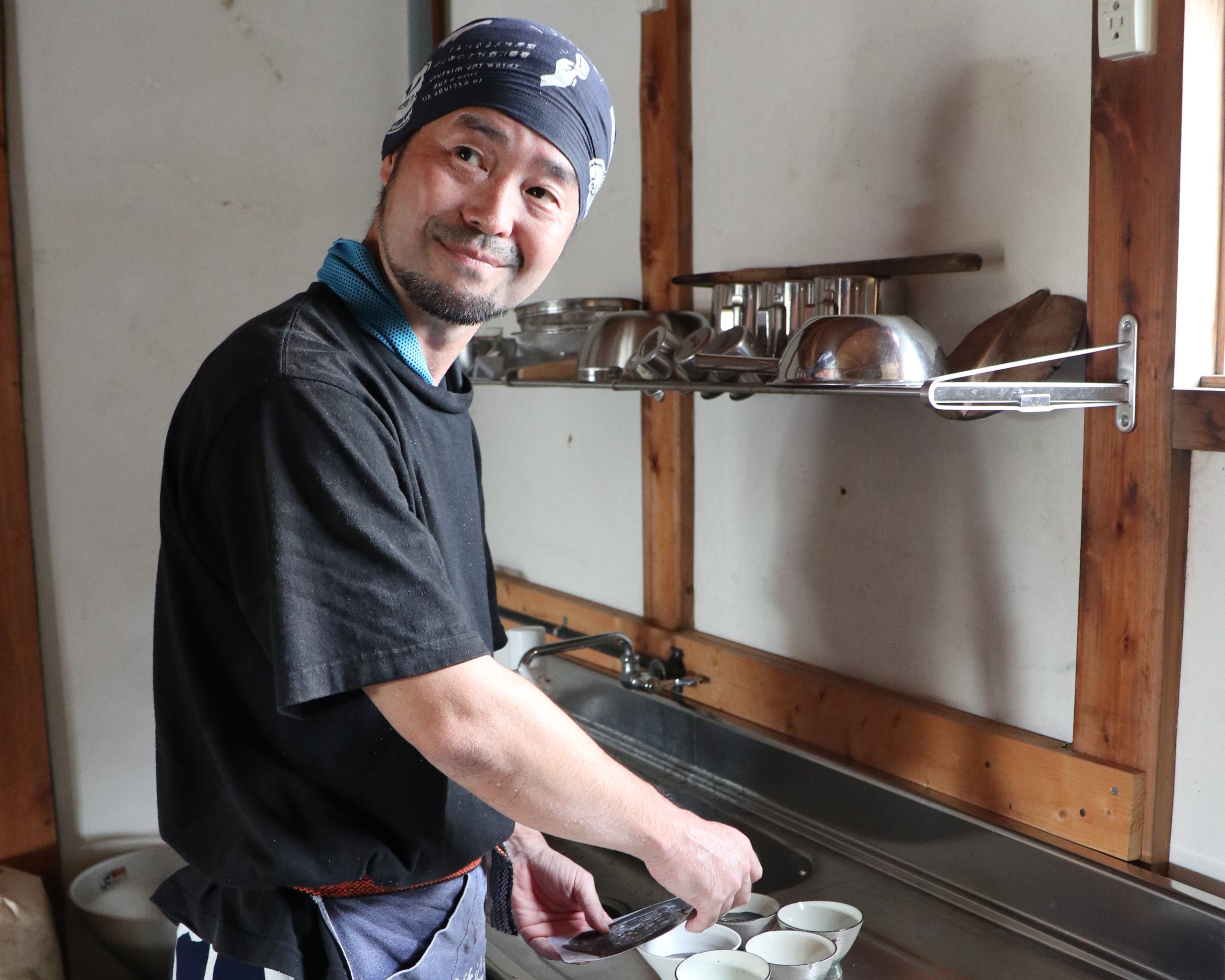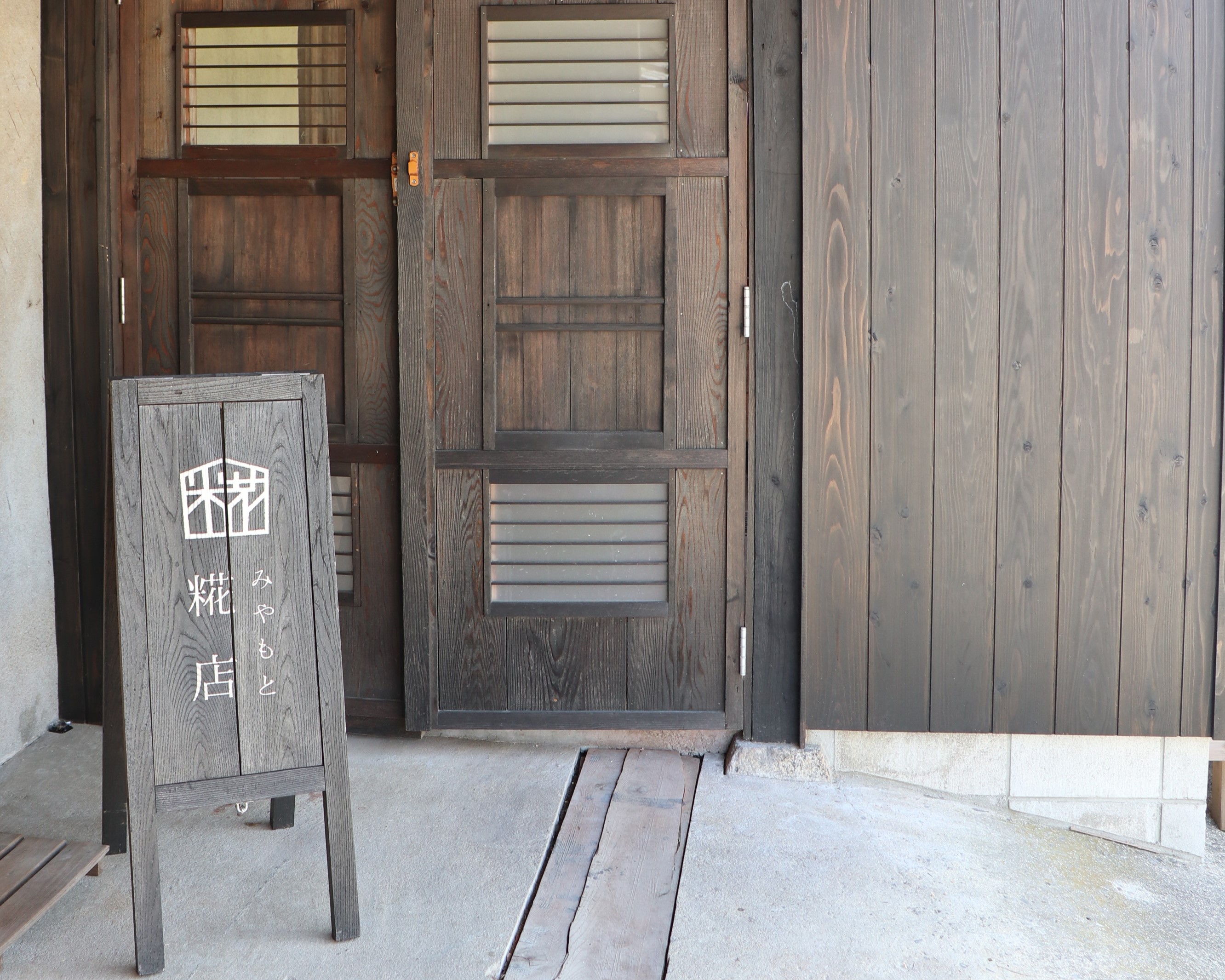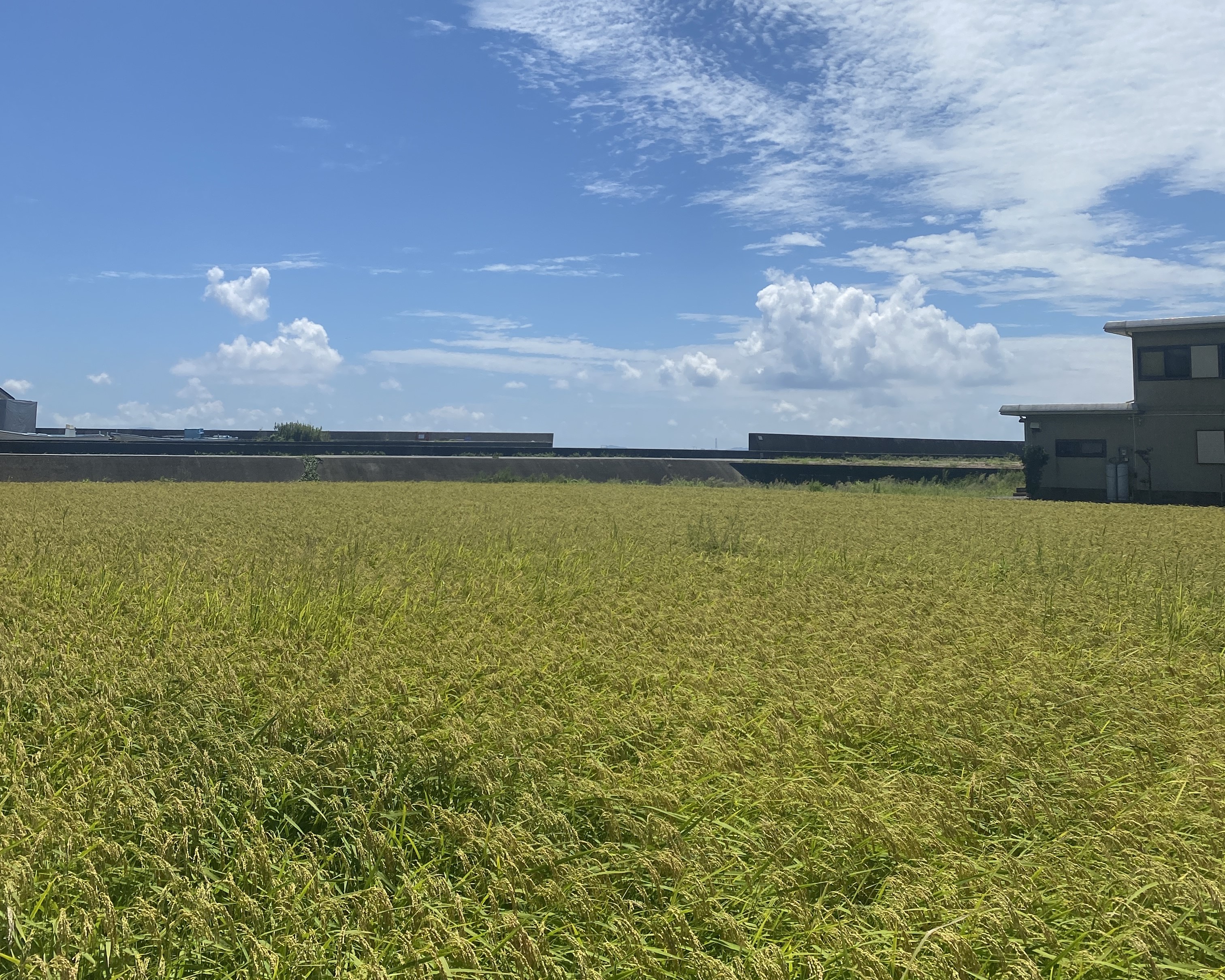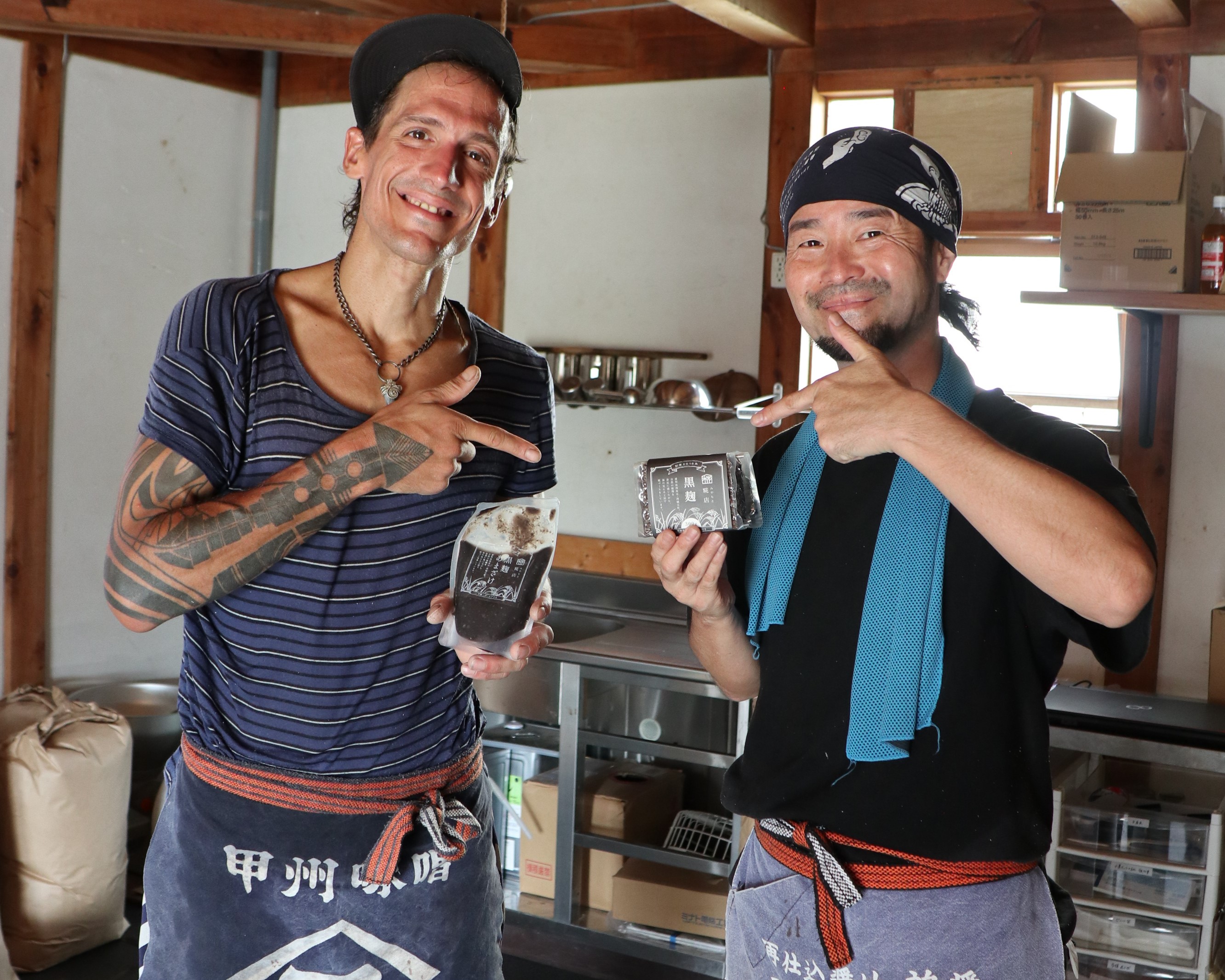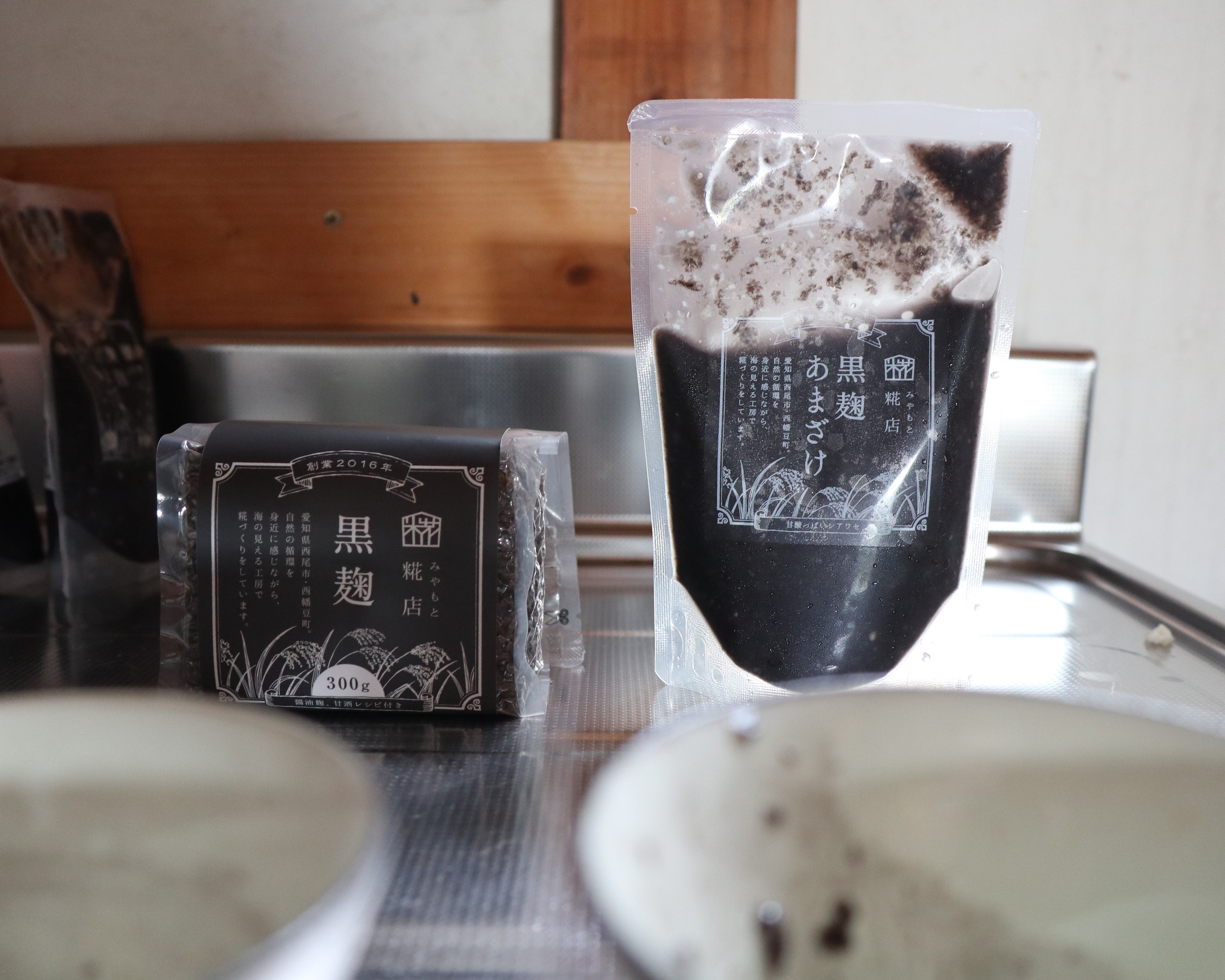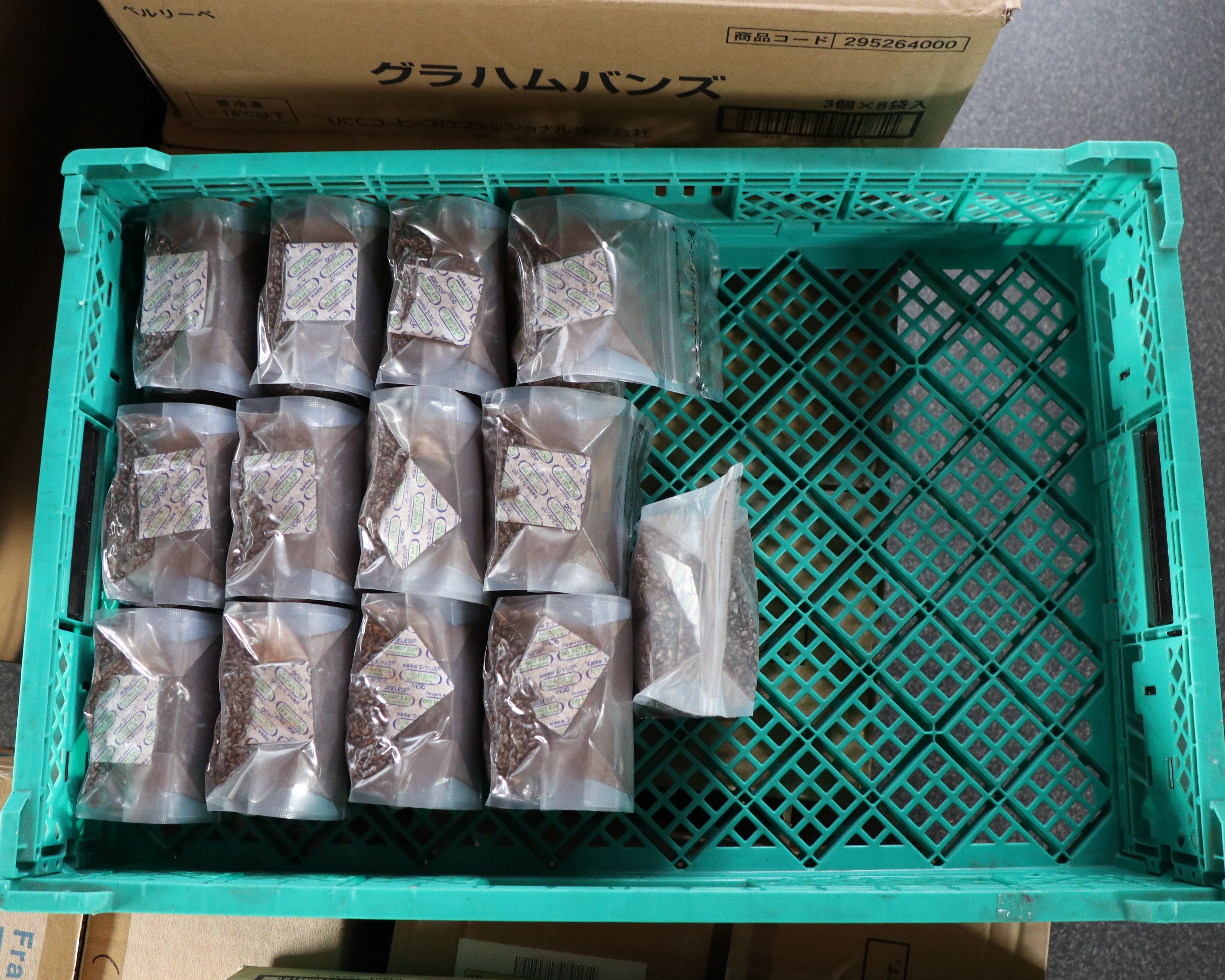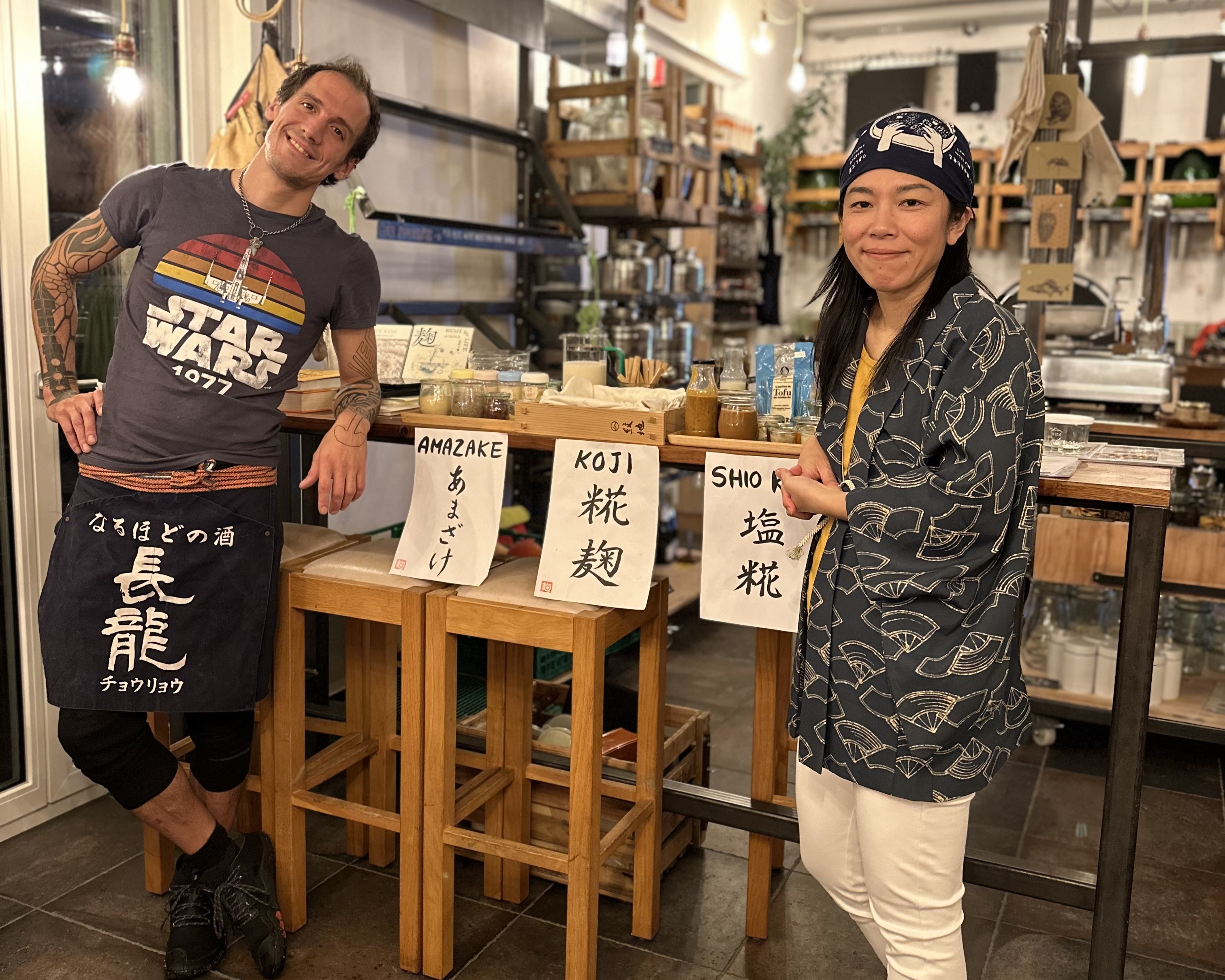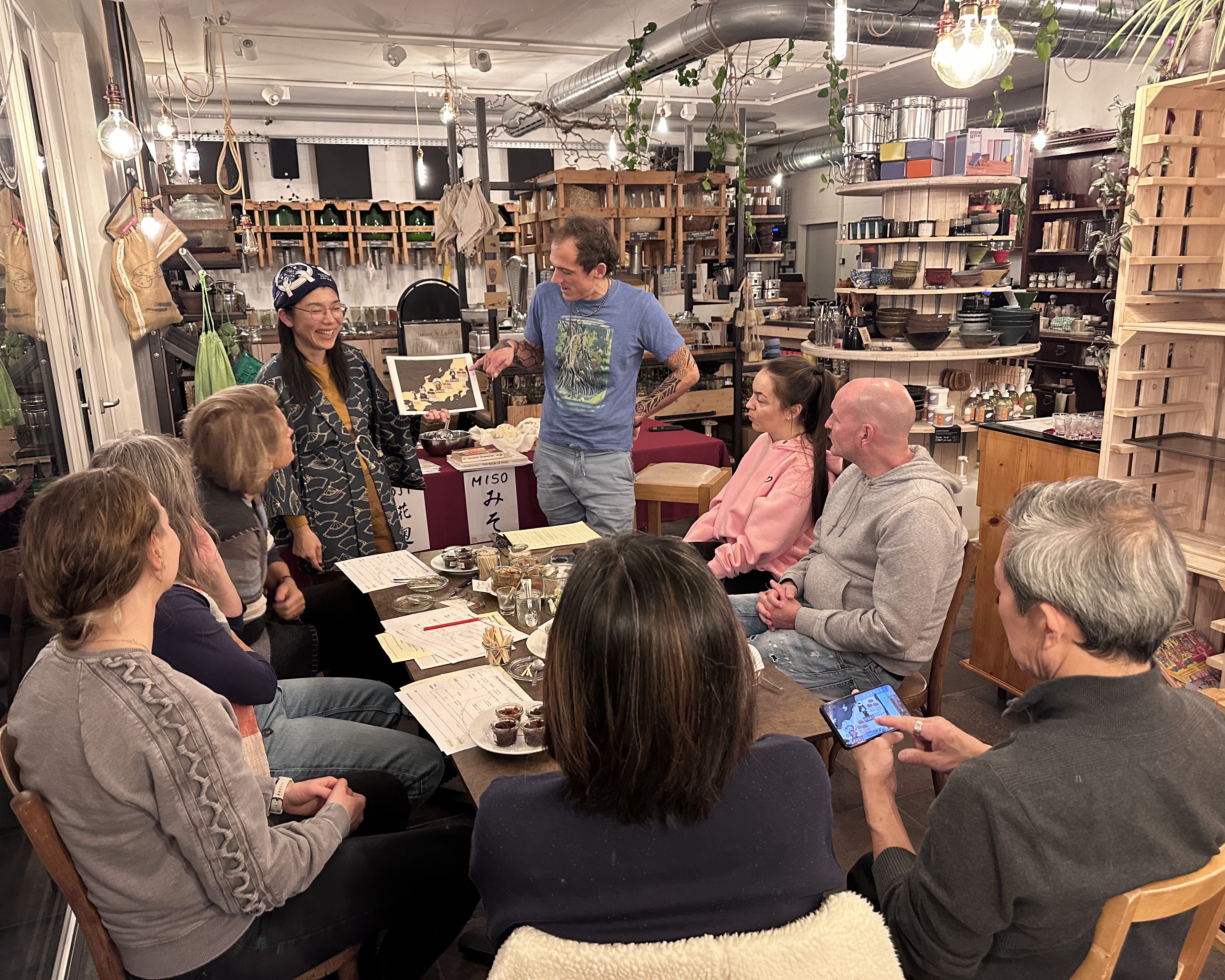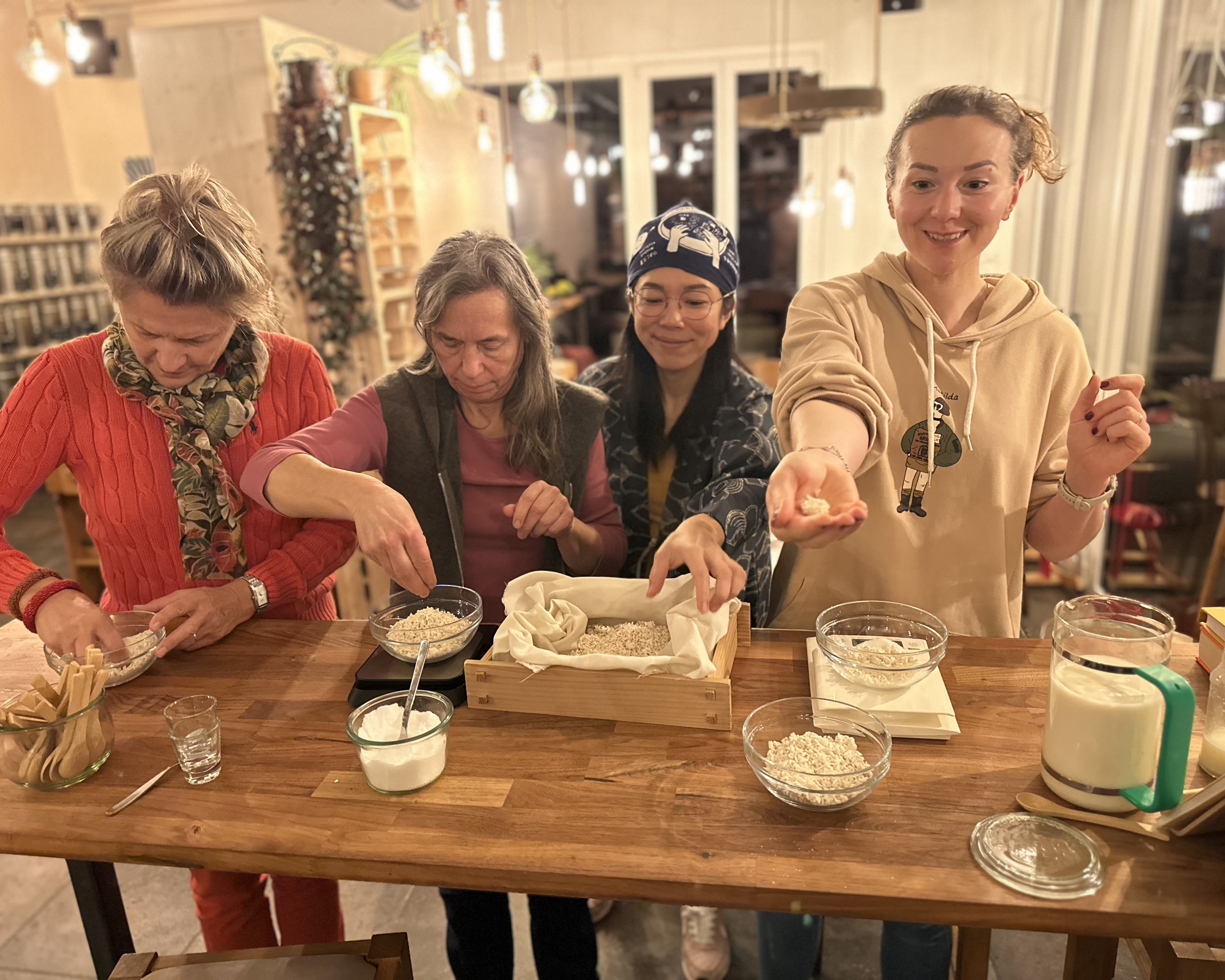In August 2023, Swiss Mirco Pizzera ventured on a culinary journey to Miyamotokojiten, a koji farm in Aichi, Japan. Guided by his profound appreciation for wholesome living and the impact of food on well-being, he now seeks to share his newfound knowledge back in Switzerland, promoting the healthy virtues of koji-based cuisine.
Rediscovering Ancient Secrets of Koji for a Healthier World
In a world where fast food reigns and culinary traditions are often overshadowed by convenience, Mirco Pizzera, being a strong believer in the power of nourishment, undertook a life-changing trip to explore the mysteries of koji, a remarkable microorganism central to Japanese cuisine. His stay in Japan, under the expert guidance of Miyamoto-san, a koji artisan, revealed the profound potential of this ancient ingredient. How did this experience impact his perspective on food and life? What drives his quest for a healthier lifestyle through food in Switzerland? Join us as we delve into Mirco’s koji journey and how he aims to reshape culinary traditions back home, drawing inspiration from Miyamoto-san’s wisdom.
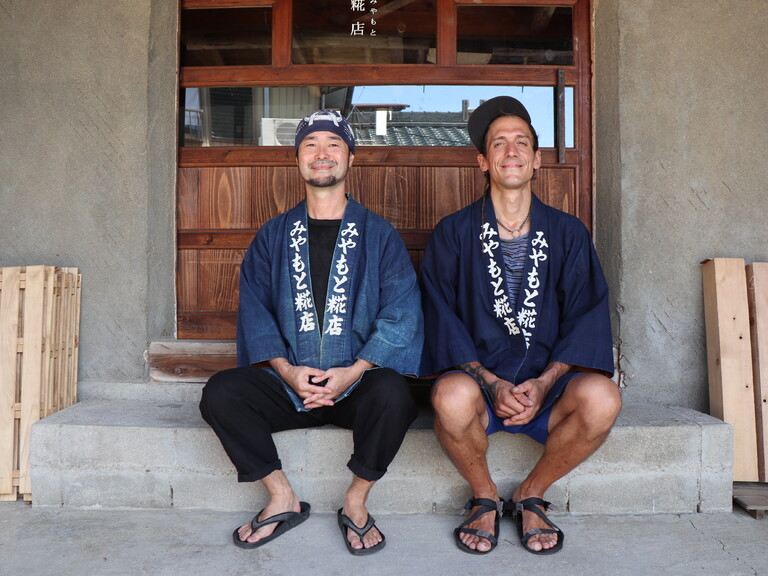
Koji: The Secret Ingredient for Flavor and Health in Japanese Cuisine
Koji, a cornerstone of traditional Japanese foods like sake, miso, shoyu, and mirin, plays a central role in Japanese culinary heritage. It is a name you’re likely to come across when exploring these culinary traditions, but what exactly is koji?
For centuries, Japanese culinary traditions have harnessed the power of a special mold known as koji. This microscopic fungus, Aspergillus oryzae, contains a treasure trove of enzymes that work culinary wonders. These enzymes can transform proteins into tasty amino acids, carbohydrates into sweet sugars, and lipids into aromatic fatty acids and other flavorful compounds. Koji releases an amino acid called glutamate, which is responsible for the umami flavor in many of the Japanese foods. Traditionally, koji is used to craft soy sauce, miso, and sake, with its remarkable ability to tame the bitterness of certain vegetables almost appearing magical. Moreover, the umami taste isn’t just about flavor—it enhances sweetness perception (without extra sugar), boosts salt perception (without more salt), and reduces the perception of bitterness. These qualities make umami a pivotal element in fostering healthier eating habits and supporting the transition toward greener food systems (Mouritsen, 2022).
The relation between koji or fermented soy products and health still needs to be further investigated, however, research already discovered health benefits associated to their consumption. According to a study by Hamajima et al. (2016) and Jayachandran & Xu (2019), koji contributes to improving digestion, bolstering immune system and delivering various nutrients like B vitamins and minerals.
Mirco Pizzera’s Culinary Journey in Switzerland
Mirco Pizzera, a 37-year-old Swiss/Italian, was born in Zufikon AG, Switzerland. After completing the first year of his apprenticeship in baking and confectionery, he continued with high school and successfully graduated in 2009. Thereafter, he earned a Bachelor’s degree in Japanology with a second major in East Asian Art History from the University of Zurich in 2016. Mirco firmly believes in the interconnectedness of our actions with the environment and in how food plays a pivotal role in this relationship. His pursuit has led him to experiment with alternative food structures, creating a food cooperative that sources local, sustainable, and organic foods. This venture, driven by voluntary work and politically motivated cooking, has been an embodiment of his philosophy.
Mirco’s journey continued with a fascination for Japanese food and culture, eventually leading him to engage with the Swiss Tofu Factory “Tofurei Engel” in 2008 as well as to visit Japan twice in 2012 and 2016 for delving into Japanese cuisine by exchanging, in workshops and gatherings with locals, the passion of cooking, health, and food. While immersing himself in the realm of Japanese cuisine, next to the Tofu factory, in 2017 he co-founded an organic regional village shop with an allocated restaurant, called “Pfünderli”. Already from 2012 to 2017, Mirco lived and worked on a transitioning organic farm in Eggenwil (CH). Remaining connected to the operation, he sources (leftover) vegetables from the farm in the Pfünderli.
Today, he continues his work at the Pfünderli which has since transitioned into a village shop with a café. This shift didn’t merely coincide with commerce; it aligned with the growing zero-waste movement in Switzerland around that time. The aim of the store has been to redefine the relationship between consumers and their food and to advocate a healthier and more environmentally conscious approach. This experience shaped his perspective on food, leading him to explore deeper connections between nourishment and health that continued to unfold during his stay in Aichi, Japan.
A Journey to the Heart of Koji – The Aichi Internship
Mirco’s journey back to Japan was greatly influenced by a contact in the local scene who sparked an interest in tofu and by discussions about the production of miso and koji, which were relatively elusive ingredients in Switzerland. Inspired by this encounter, Mirco undertook an apprenticeship at “Miyamotokojiten” to delve deeper into Japanese koji production under the expert guidance of Miyamoto-san, a koji artisan based in Aichi, Japan. Mirco mentions: “I felt like seeing and learning something more about the traditional Japanese food culture. I thought it must be very great to see how koji is produced in a slow pace, like from hand with love and with lots of thoughts.”
The Wisdom of Miyamoto-san and the Magic of (Black) Koji
Takashi Miyamoto, a 47-year-old koji Artisan from Aichi, commenced a journey that transcends generations and defines the essence of Japanese culinary heritage. As a dedicated family man, Miyamoto-san shares his wisdom on koji, considering it more than just a seasoning but the very soul of Japanese cuisine, with his family, comprising of his wife and daughter, forming the supportive backdrop to his ventures.
Before establishing the farm and shop “Miyamotokojiten” eight years ago, Miyamoto-san’s journey took various turns. Initially a backpacker, he transitioned to farming before becoming a pioneering entrepreneur in the koji business. Despite the traditional expectation for koji businesses to span generations, Miyamoto-san’s innovative spirit led him to establish his shop and produce koji for the past eight years. His culinary expertise extends beyond mere ingredients, delving into the precision of timing in the koji-making process—an aspect that deeply intrigued Mirco. Inspired by the unique taste of black koji, traditionally reserved for spirits like awamori and shochu, Miyamoto-san ventured into producing amazake, a traditional Japanese drink, bringing the richness of tradition into the daily lives of households. With his family by his side, Miyamoto-san continues to shape the koji landscape, bridging the gap between tradition and contemporary culinary experiences.
According to Miyamoto-san, “There are many important elements to consider when producing koji such as rice and water, but I think the timing is very important. To handle ingredients at the right timing. Even using the same rice turns out to be different depending on the timing.”
For Miyamoto-san, koji wasn’t just about making food healthier; it was about food preservation and, by extension, sustainability. He firmly believed that koji enriched food with a wide variety of nutrients, ultimately enhancing its health benefits. He emphasizes:
“In the past, the culture of fermentation - such as koji, miso, and soy sauce - was not meant to serve the purpose of becoming healthy, but to preserve food for a long period of time especially in the areas where there was heavy snow in the mountains or where the crops could only be grown in summer. While the fermentation may increase the nutritional value of the food, I believe that prolonging the shelf life of food is linked to sustainability. Also, koji produces a wide variety of nutrients, which I believe will increase the health benefits.”
Mirco’s Daily Journey in the Art of Koji Production
In Japan, as Mirco has delved into the world of koji production, he has encountered an intricate daily routine that emphasizes the essence of traditional expertise. The process begins with the careful preparation of rice, the cornerstone of koji production. The rice is meticulously washed, soaked, and then rinsed before being steamed. The steaming process releases a delightful, fragrant aroma that permeates the air, creating a sensory experience that connects Mirco to the heart of Japanese culinary heritage.
The critical stage of koji production involves the introduction of koji spores, carrying the invaluable Aspergillus oryzae culture. This pivotal step occurs in three meticulously executed stages. Mirco and Miyamoto-san gently spread the spores over the rice, ensuring an even distribution of this essential element. The process reflects a deep sense of respect, tactile awareness, and love for the ingredients, underscoring their significance in the art of koji production. Throughout the process, there is careful mixing, turning, and gentle mashing, all infused with an awareness of the importance of nurturing life’s cycles.
Once the koji spores are thoroughly integrated, the rice is spread into spacious boxes, often adorned with a symbolic spiral that signifies the continuity of life. The final drying process begins, during which the boxes are thoughtfully covered, and a fan is employed to remove any remaining traces of humidity. Temperature control remains of paramount importance through the whole process, as koji is exceptionally sensitive to high temperatures. The art of temperature control mirrors the dedication of previous generations who, even during the night, took shifts to ensure the ideal conditions were maintained.
Implementing Koji Wisdom back in Switzerland
Having gained invaluable knowledge and hands-on experience in Japan, Mirco has returned to Switzerland with the mission to spread the magic of koji. The focus is not only on introducing the flavors of Japan but also on informing people about the vitality that koji can add to their lives.
Mirco’s acquired knowledge of koji has highlighted the unique bond between this tiny organism and the world around us. He has connected his appreciation for koji with the idea that mushrooms, like Armillaria ostoyae, the largest and oldest organism on Earth, form expansive networks underground, carrying life-giving information and nourishment for plants and trees. This interconnectivity underscores the vital role of mushrooms, ultimately casting koji as an unrecognized hero in the tapestry of life on Earth. As Mirco poetically describes, “Mushroom is the key to life on earth,” and with the wisdom he has gathered, he acclaims koji’s role as “something very precious and alive”. He recognizes that koji is not merely a seasoning or condiment but an embodiment of life and stresses the importance of more “alive”, vibrant, nourishing food compared to the widespread prevalence of rather “dead food” nowadays.
Mirco’s culinary journey keeps going, and there are more stories to come from his adventures. He’s returning to Japan soon, hinting at more tales from his culinary exploration. His goal to introduce koji’s magic to Switzerland is not just a personal mission; it’s about blending culinary traditions, health, and sustainability. Mirco has aimed not only to share newfound techniques but to intertwine the precision of Swiss craftsmanship with the ancient art of koji fermentation. As he has delved into the intricate process, he has envisioned becoming a bridge between two culinary worlds.
Mirco keeps experimenting with koji back in Switzerland by trying to reshape Swiss cuisine. Indeed, the Pfünderli builds on Mirco’s knowledge and experience from Japan, by introducing new workshops on miso, koji and amazake making, and more. He also had the creative idea to blend cultural dishes, offering recipes like bread with amazake filling or amazake matcha latte. Miyamoto-san’s further shares his vision to harness koji’s centuries-old legacy to inspire and create new culinary experiences, as he concludes, “The history of koji, soy sauce, and miso is hundreds of years long […] I would like to be able to give an output and inspiration in using koji in an exciting way.”
Koji is not just a mold; it’s a small universe of vitality, flavor, and health waiting to be explored. It has the power to reshape the way we think about food and our connection to nature, bridging the gap between different cultures and inspiring a more holistic approach to food. As Miyamoto-san fittingly remarks:
“Koji alchemy lies in a small bacteria. Yet, koji can take you on a journey into the big world, similar to the way we sense it when we travel abroad, for example, to Switzerland. One can feel a small universe in koji.”
Citations:
Hamajima H., Matsunaga H., Fujikawa A., Sato T., Mitsutake S., Yanagita T., Nagao K., Nakayama J., Kitagaki H (2016). Japanese traditional dietary fungus koji Aspergillus oryzae functions as a prebiotic for Blautia coccoides through glycosylceramide: Japanese dietary fungus koji is a new prebiotic. Springerplus. 11;5(1):1321.
Jayachandran, M., & Xu, B. (2019). An insight into the health benefits of fermented soy products. Food chemistry, 271, 362-371.
Mouritsen, O. (2022). Umamification of food facilitates the green transition. Department of Food Science, Taste for Life, Design and Consumer Behavior, University of Copenhagen, 26 Rolighedsvej, DK-1958 © Higher Education Press 2022
